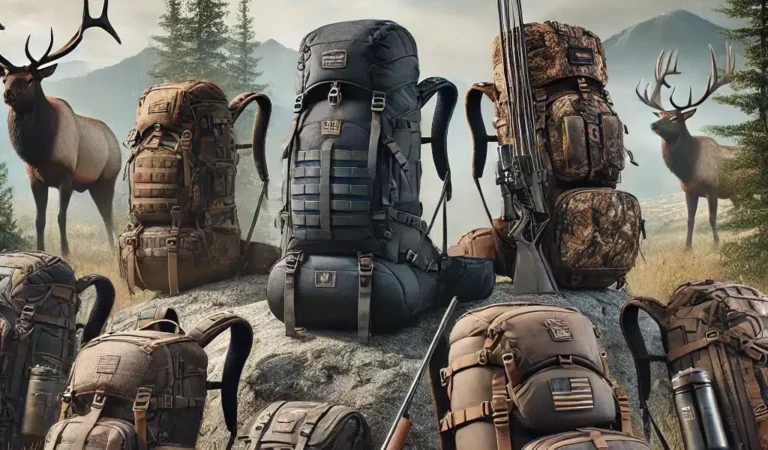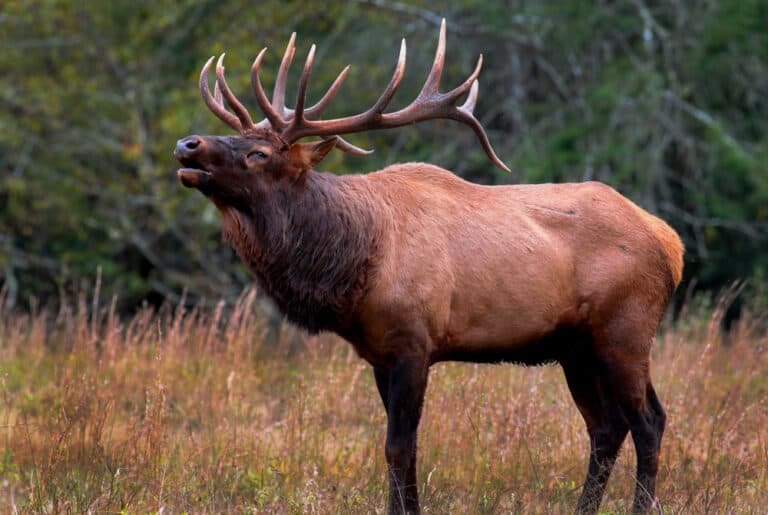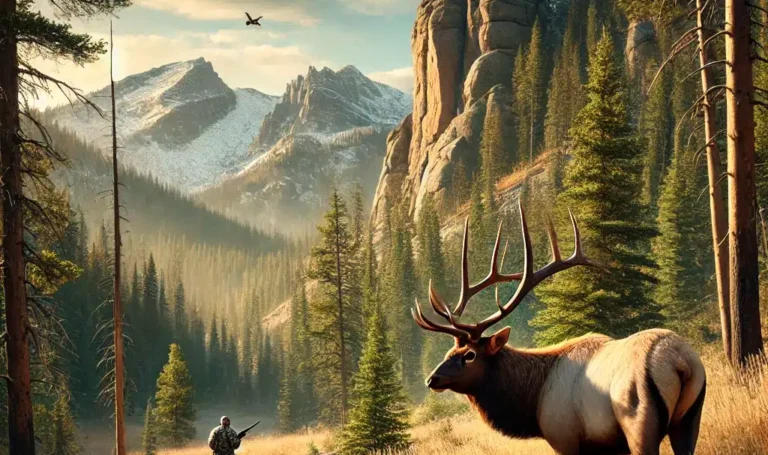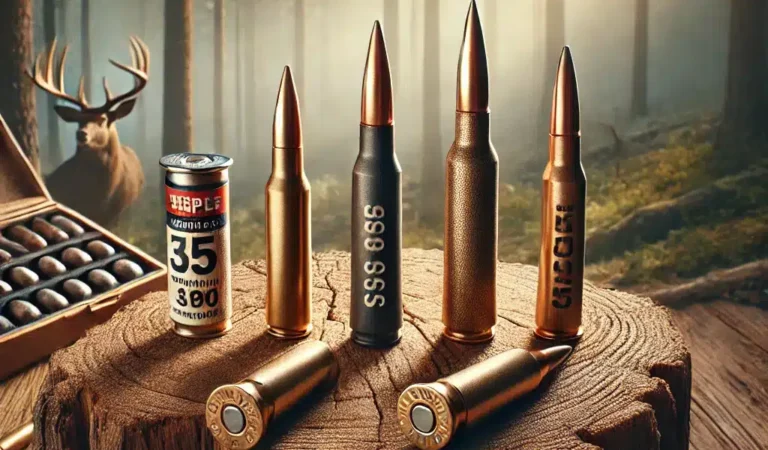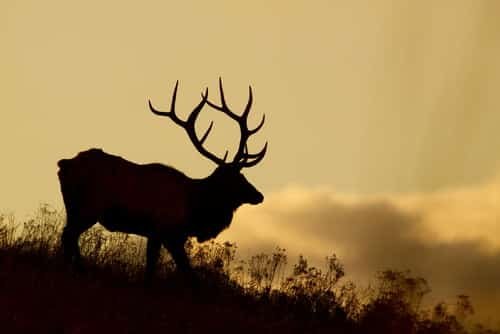Elk Hunting with a Bow: Powerful Guide for 2024
The massive bull screamed another challenge from 40 yards away, hidden in the dark timber. My heart pounded as I nocked an arrow, knowing the next two minutes would make or break my entire archery season. After months of preparation, this was the moment every elk bowhunter lives for. Let’s learn more about elk hunting with a bow.

Bowhunting elk is often called the ultimate challenge in North American hunting – for good reason. It combines the physical demands of mountain hunting with the nerve-wracking intimacy of archery range. Drawing from my two decades of chasing bulls with a bow, I’ll share the strategies that have helped me and countless others find consistent success in elk country.
This comprehensive guide covers everything from selecting your first bow setup to getting within 40 yards of a rutting bull. Whether you’re transitioning from rifle hunting or picking up a bow for the first time, you’ll learn the field-tested techniques that put elk in the freezer and memories in your heart.
Before heading into the mountains, let’s explain exactly what you need to know.
Getting Started with Bow Hunting Elk
“Let’s face it – getting started in elk bowhunting can feel overwhelming. But break it down into simple steps, and suddenly, that mountain doesn’t seem so steep.
Choosing Your Bow Setup
- Minimum 60-pound draw weight
- At least 29 inches of draw length
- Modern compound recommended for beginners
- Look for speeds over 280 FPS
- Adjustable draw weight helps with practice
- State-specific draw weight minimums
- Broadhead restrictions
- Lighted nock regulations
- Required hunter orange
- Archery season dates
Essential Gear Checklist Basic Setup
- Compound bow
- Carbon arrows (at least 12)
- Fixed-blade broadheads
- Release aid
- Quality bow sight
- Stabilizer
- D-loop
- Peep sight
Essential Gear Deep Dive

After helping dozens of new bowhunters gear up, I’ve learned what’s essential and just nice to have.
Arrows and Broadheads The Perfect Setup
- Total arrow weight: 450-550 grains
- Spine: 300-400 for most setups
- Fixed-blade broadheads (100-125 grain)
- Heavy inserts for better penetration
Calling Equipment Must-Haves
- Diaphragm calls (pack 3)
- Push-button cow call
- Bugle tube
- Position reed
- Extra reeds
Clothing System Layer properly
- Merino base layers
- Lightweight puffy
- Rain gear
- Quiet outer layer
- Good boots (already broken in)
Pro Tip: I keep my release aid attached to my bino harness, not my bowstring. Noisy Velcro has cost me too many stalk opportunities.

Pre-Season Preparation
Success in September starts in June. Here’s your roadmap to opening day.
Shot Practice Plan Daily Routine
- 20 shots before breakfast
- 10 shots at last light
- Practice from knees and seated
- Shoot uphill and downhill
- Use realistic hunting clothes
Physical Training 12-Week Program
- Hiking with loaded pack (3x/week)
- Leg strength training (2x/week)
- Core work (daily)
- Shooting after exercise
- Elevation training when possible
Scouting Like a Pro Key Focus Areas
- Water sources
- Wallows during rut
- Dark timber edges
- Bedding areas
- Travel corridors
E-Scouting Tools
- onX Hunt for boundaries
- Google Earth for terrain
- Historic weather data
- Trail camera locations
- Access points
Real-World Example: Last season, I found my best bull by marking every water source within 2 miles of my access point on onX, then physically scouting the three most promising areas. Two had heavy elk sign, and one became my honey hole.

Hunting Strategies During the Rut
The elk rut is what bowhunting dreams are made of. Here’s how to turn those screaming bulls into filled tags.
Timing Your Hunt Prime Times
- First light until 10 AM
- 4 PM until dark
- After rain showers
- During temperature drops
- New moon periods
Setup Strategies The Perfect Ambush
- Set up slightly above elk trails
- Keep wind in your face
- Have shooting lanes pre-ranged
- Stay within 40 yards of trails
- Keep calling position behind you
Reading Bull Behavior What Their Bugles Mean
- Location bugle (single, short)
- Challenge bugle (long, aggressive)
- Herd bull bugle (multiple cows nearby)
- Satellite bull (moving, searching)
Pro Tip: Don’t call again when a bull hangs up at 80 yards. That’s when most hunters blow it. Instead, cow call softly and wait him out.
Calling Techniques That Work

Forget what you’ve seen on TV. Here’s how real elk calling gets bulls in bow range.
Basic Calling Sequence
- Soft cow call
- Wait 15 minutes
- Bugle, if you hear a bull
- Cow call sequence
- Challenge bugle only if he’s fired up
Advanced Calling Strategy
- Use cow/calf sounds early season
- Aggressive calling mid-rut
- Soft calling the late rut
- Mix in feeding sounds
- Add herd sounds when close
Real-World Example: Last September, I called in three bulls in one morning using quiet mews and feeding sounds. Sometimes less is more.
Shot Placement and Recovery

At full draw on a bull elk, you have seconds to decide what will impact the next several hours – or days.
Perfect Shot Placement Aim for
- Tight behind shoulder
- Middle of the body vertically
- Slightly quartering away
- Inside shoulder on the opposite side
- Wait for the step forward
After the Shot, the First Steps
- Mark your shooting position
- Watch the direction of travel
- Listen for crash
- Note that the last known position
- Start your tracking app
Blood Trailing Tips
- Wait 30+ minutes unless the perfect shot
- Mark last blood with GPS
- Use bright tape markers
- Take photos of blood color
- Call for help early if needed

Field Care and Pack Out
Success means your work is just beginning. Here’s how to protect your harvest.
Quick Field Dressing Priority List
- Remove organs
- Get hide off quickly
- Quarter immediately
- Keep meat clean
- Start cooling process
Packing It Out Strategy
- Bone out if far from the truck
- Use game bags always
- Keep quarters off-ground
- Make multiple trips if needed
- Start with the heaviest pieces
Pro Tip: I pack a small tarp that weighs nothing but keeps my quarters clean and dry during processing. This is the best tip I ever got from an old timer.
Common Mistakes to Avoid
Learn from others’ mistakes instead of making them yourself.
Biggest Errors
- Calling too much
- Poor shot selection
- Rushing the stalk
- Wrong wind setup
- Not practicing enough
Equipment Fails
- Untested broadheads
- Weak arrows
- Bad release form
- Dirty bow
- Wrong clothing
Conclusion
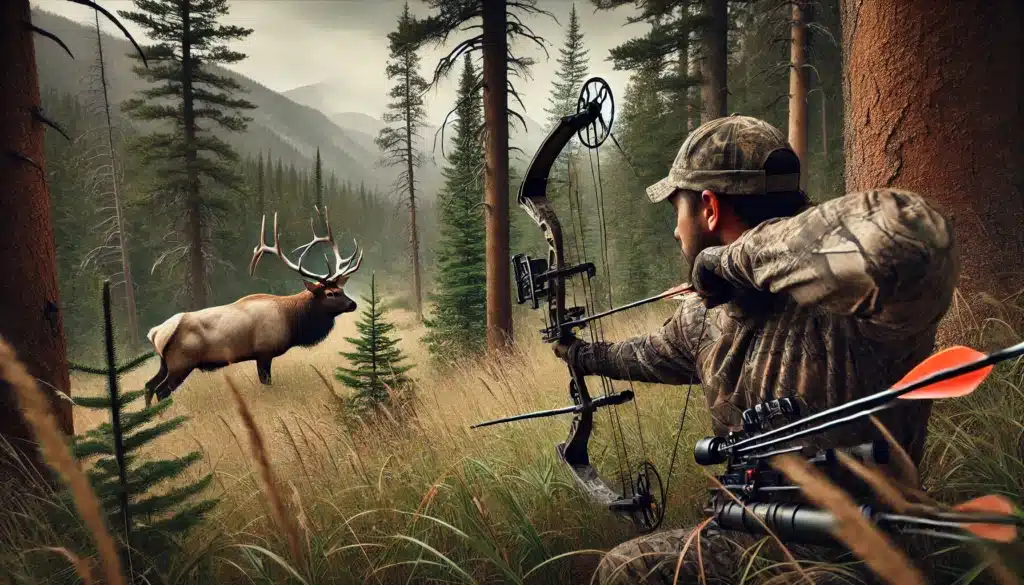
Bowhunting elk isn’t just a hobby – it’s an addiction that will change how you see the mountains forever. Every season teaches new lessons, and every hunt builds on the last.
Remember
- Practice until it’s automatic
- Trust your setup
- Stay patient
- Make ethical shots
- Enjoy the journey
Success Tips
- Join a local archery club
- Find a mentor
- Practice year-round
- Study elk behavior
- Stay physically ready

